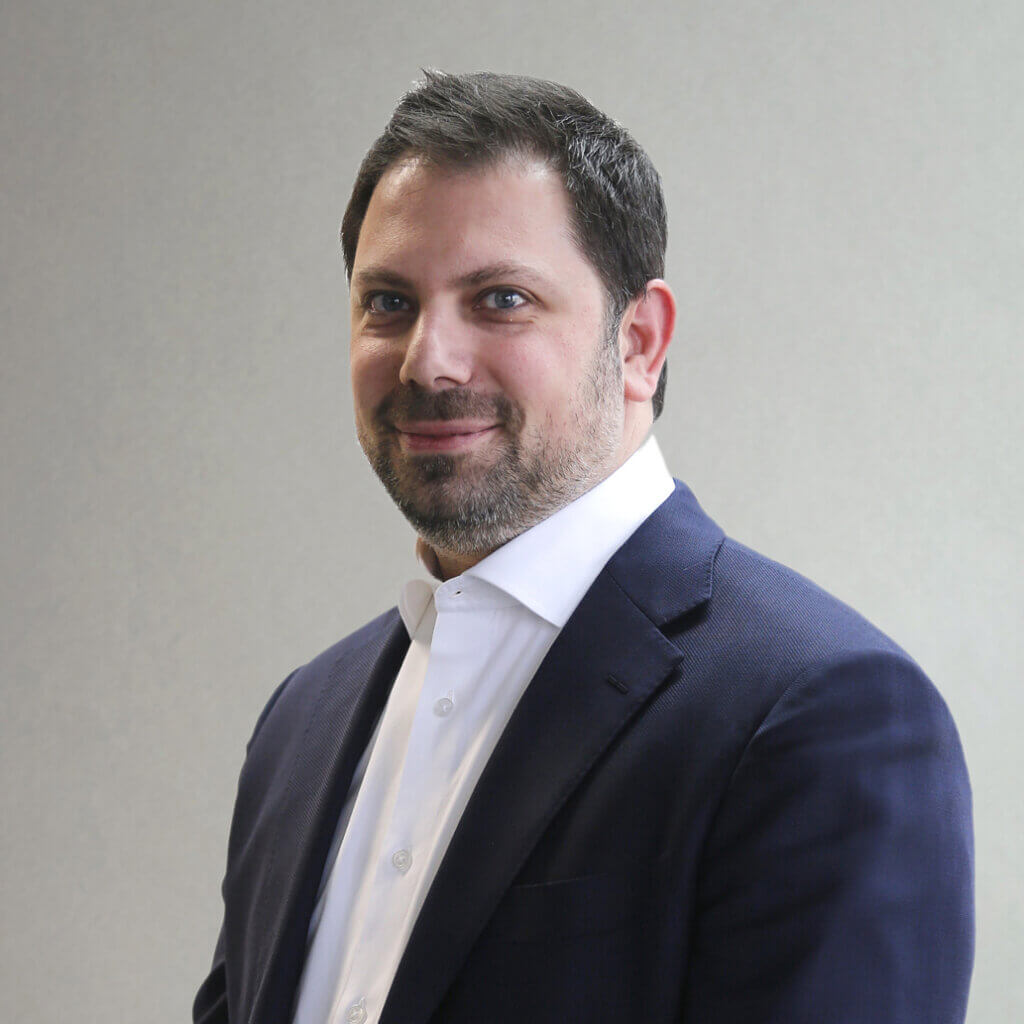
News
Alter Domus appoints Demetry Zilberg as Chief Technology Officer and Group Executive Board Member

Alter Domus, a leading provider of tech-enabled fund administration, private debt, and corporate services for the alternative investment industry, has appointed Demetry Zilberg as its new Chief Technology Officer. In this role, Demetry will report to Doug Hart, Alter Domus Chief Executive Officer, and will also join Alter Domus’ Group Executive Board.
Demetry brings a strong track record of product driven technology transformation and program delivery in the financial services industry. Prior to joining Alter Domus, Demetry was the Chief Technology Officer and Managing Director in the Digital Technology & Innovation business at Wells Fargo. He also spent 20 years at FactSet in various technology roles and ultimately serving as the firm’s CTO.
Alter Domus CEO Doug Hart said: “Demetry has an outstanding background in delivering technology solutions for financial institutions, and we are thrilled to have him join our high-performing Technology team. His leadership will be immensely valuable in advancing Alter Domus’ proprietary technology platforms and product offerings, as well as further differentiating our unique tech capabilities and assets.”
Following the announcement of his appointment, Demetry Zilberg, Alter Domus Chief Technology Officer, said: “I am excited to join Alter Domus and lead its enterprise-wide technology strategy and execution. The opportunities to leverage technology to drive product outcomes, in the alternative investments space, are enormous as firms modernize to grow and scale. Data and analytics-driven products are a particularly exciting opportunity. I am looking forward to collaborating with our talented and experienced group of executive leaders and technologists to accelerate Alter Domus’ growth and continued success.”
Demetry attended the Pennsylvania State University where he studied Biochemistry & Molecular Biology and Electrical Engineering.
News
Alter Domus appoints Amaury Dauge as Chief Financial Officer and Group Executive Board Member

Luxembourg, April 8th, 2024 – Alter Domus, a leading provider of tech-enabled fund administration, private debt, and corporate services for the alternative investment industry, has appointed Amaury Dauge as its new Chief Financial Officer. In this role, Amaury will report to Doug Hart, Alter Domus Chief Executive Officer, and will also join Alter Domus’ Group Executive Board.
Amaury has a broad international experience ranging from stock exchanges to fintech, and he conducted a number of business transformation projects in capital investments, M&A and post-merger integrations. A significant part of Amaury’s career has been as CFO of global financial services organisations such as Allfunds and Euronext, where he has played a key role in successful IPOs on both occasions.
Alter Domus CEO Doug Hart said: “I’m delighted to welcome Amaury to the Group Executive Board. He brings exceptional leadership, and a proven track record to the business that will help drive our strategic ambitions. This also comes at an exciting time where Alter Domus is preparing to enter its next phase of growth.”
Following the announcement of his appointment, Amaury Dauge, Alter Domus Chief Financial Officer, said: “Few companies can match Alter Domus’ excellent results and boundless ambition. I’m therefore particularly proud to be joining its talented teams.”
Amaury holds an Executive MBA from INSEAD, a CIIA from CFAF – Centre de Formation à l’Analyse Financière, and a Bachelor of Business Administration in Finance from the Inseec Group.
News
Opportunistic credit funds are ready for action
Opportunistic credit funds are gearing up for a busy year, as increased interest rates start to bite. Greg Myers, Group Sector Head of Debt Capital Markets, shares his thoughts with Private Debt Investor for their Opportunistic Credit and Distressed Debt special report.

We have seen significant fund closings and even bigger fund launches in the opportunistic credit space. Why is that corner of private debt proving so attractive?
Opportunistic credit, or special situations, is proving popular for a lot of the same reasons that private credit as a whole is attracting the attention of investors. The difference, of course, is that opportunistic credit funds offer a potentially greater uplift, particularly if you are talking about heavily distressed scenarios. Those types of restructuring deals come with significant outsized return expectations when the distressed assets get restructured or repositioned.
We have seen institutional investors increase allocations to private credit consistently in recent years to take advantage of the yield profile offered by those investments, which are now in the high single to low-double digits for performing loans, even stretching into the mid-teens. On a levered basis, you can go even higher. When you consider a special situations or opportunistic credit strategy, you are looking at returns in the 20-30 percent bracket, which is clearly attractive. I think that is the fundamental draw these funds are able to offer to investors anticipating a credit cycle correction.
What are the key macro factors propelling this opportunity set in the current market environment?
The impact of higher interest rates is starting to make itself felt. A lot of businesses, and particularly sponsor-backed businesses, are beginning to feel the pressure of that increased interest rate burden. At the same time, there has clearly been a profound impact on the consumer, in terms of maintenance of household budgets and the ability to consume. That, in turn, is having knock on implications for the companies manufacturing and selling products to consumers, especially if they have meaningful levels of indebtedness.
I think those trends will continue this year. We have not seen the same level of refinancing that we did a few years ago. Deals are not being restructured at the same velocity and that is inevitably going to impact borrowers, with structural defaults and covenant breaches pushing some credits into meaningful restructuring scenarios, which is often a precursor to a broader market trend that might lead more distressed opportunities.
There have been some aggressive predictions made, suggesting that private debt default rates could reach 5 percent this year. What are your thoughts on that and what implications could that have for opportunistic credit?
Yes, Bank of America research produced in October last year estimated that private debt defaults would soon reach 5 percent, thereby exceeding de[1]fault rates for syndicated loans, based on the fact that around one-third of deals in debt fund portfolios were due to mature within 30 months. That default risk is certainly one cloud hanging over the private credit industry right now, while at the same time creating potential opportunities for opportunistic credit managers.
Which loans are particularly at risk and therefore where do you see opportunistic plays emerging?
Private debt, as an industry, is still relatively young. It only really emerged as a fully-fledged asset class in the aftermath of the global financial crisis, when banks were retrenching from new lending to rebuild balance sheets and manage legacy portfolios.
Since that time, the private debt industry has expanded rapidly. In fact, according to PitchBook, it has swelled from $280 billion in assets under management in 2009, to $1.5 trillion in 2022, as managers have seized the opportunity to fill the void left by banks.
During that time, private credit has never really had to tackle a true market downturn and many of these credits now maturing were issued in a bull market, characterized by high levels of leverage and loose terms. Meanwhile, some managers, particularly those looking to build market share, took on more marginal transactions with especially aggressive capital structures. Those are the credits that will be particularly exposed.
In general, I would say that larger and more established platforms will have been less likely to chase the market in 2021 and 2022 and will therefore have more resilient portfolios. Those managers are also more likely to be well resourced when it comes to managing out any credits that do fall into stress. By contrast, newer managers with smaller teams are likely to come under more pressure. Ultimately, this could lead to a bifurcation in the private credit market, with top tier firms attracting an ever-larger share of both dealflow and fundraising.
Are there any particular sectors where opportunistic credit situations are more prevalent, in addition to consumer and retail?
With the exception of consumer and retail, I wouldn’t say that there is any pronounced trend with regard to the industry focus of our clients in this space right now. We are still in the early stages of how this interest rate environment is going to play out, so I think it is too early to tell. However, I would say that there has been a fair amount of portfolio rebalancing in the oil and gas industry. A lot of the traditional lenders in that space – the big retail banks – are starting to rotate out.
How is the opportunistic credit GP landscape evolving? Are we seeing many new entrants?
I think the players that have been active in this market for some time are continuing to raise funds to take advantage of the anticipated market dislocation. But I would say we are also seeing new managers looking to build teams in or[1]der to enter the space. Some of these new entrants are big name asset managers with a strong legacy in private equity. Others have a strong legacy in direct lending. They are not only looking to access these opportunistic credit deals, but also to market new strategies and new funds to their existing investor base.
How do you see the opportunistic credit market evolving?
I think that there will be a lot more borrowers testing the limits of their credit agreements. That is going to lead to forced divestment for the legacy credit funds that are currently holding onto those assets. It will therefore also lead to opportunities for opportunistic credit funds to participate.
There will probably be some initial mispricing of risk with those credits, but over time, and as the volume of dealflow grows, I think the market will establish a cadence and risk will begin to be priced correctly.
Perhaps, the biggest issue that I see on the horizon is the fact that some of these broadly syndicated loans are billions of dollars in size, which is not something that special situations of opportunistic credit funds have come across in a while. They have more typically dealt with mid-market private credit loans of a couple of hundred million dollars. It will be interesting to see how managers choose to participate in those situations and how pairings of certain GPs plays out.
This article was originally published in PDI’s Opportunistic Credit and Distressed Debt special report.
Key contacts

Greg Myers
United States
Global Sector Head, Debt Capital Markets
News
Alter Domus secures strategic investment from Cinven
New international private equity firm joins founders and Permira to support Alter Domus on next stage of growth

Luxembourg, London and Chicago, March 4th, 2024 – Alter Domus, a leading global provider of end-to-end tech-enabled fund administration, private debt, and corporate services for the alternative investments industry, today announced that it has secured a new strategic investment from Cinven. Cinven is a leading international private equity firm focused on building world-class global and European companies. The transaction gives Alter Domus an Enterprise Value of €4.9 billion ($5.3 bn).
Through the transaction, Cinven will support the long-term strategic growth of Alter Domus, working in close partnership with the founders of Alter Domus and Permira, who will continue to be significant shareholders. Their continued involvement and investment in the firm is a huge endorsement for Alter Domus as a business, its global growth strategy to date and its future potential. The new structure means Alter Domus will now benefit from the support of three fantastic partners in Cinven, Permira and the founders, and this transaction strengthens the capital base of the company enabling it to focus on the next stage of its growth.
Established in 2003, Alter Domus is one of the largest fund administrators globally, with over $2.5tn assets under administration (AUA). Solely dedicated to alternative assets, Alter Domus offers end-to-end tech-enabled fund administration and corporate services across three sectors: private equity, real assets and private debt. With the support of Permira since 2017, the firm has grown rapidly to meet the evolving needs of its client base, building a global network that now spans 23 jurisdictions, servicing 90% of the top 30 asset managers globally. Since Permira’s investment, Alter Domus has increased revenue, EBITDA and employee numbers by 5x.
Additional investment characteristics of Alter Domus that were attractive to Cinven include:
- Its impressive financial track record, with Alter Domus having consistently outperformed the market, delivering double-digit organic growth and attractive margin performance;
- Alter Domus represents a scarce, market-leading global fund services platform that delivers market-leading service levels to a blue-chip customer base including 90% of top-30 asset managers served;
- It is a proven M&A platform in the fragmented fund services market that has a successful track record of acquisitions, and a strong further pipeline of potential buy and build opportunities across a range of markets and geographies;
- The company operates in attractive markets, with the fund services subsector benefitting from the structural growth of private capital markets, increasing regulation and a continued trend towards outsourcing of fund services, together with downside-protection through strong revenue visibility and cashflow generation;
- Alter Domus has received significant investment in the tech-enablement of the company – resulting in best-of-breed third-party platforms, workflow automation and a leading data and analytics product capability to better serve the increasingly complex needs of its global client base; and
- It has an experienced and highly respected management team that has led the strong performance to date.
In little more than two decades, Alter Domus has grown from being a small Luxembourg-based spin-off from PwC to become a world-leading fund administrator. The investment from Cinven is a significant milestone in the development of Alter Domus as it continues along this trajectory. Together with Permira, we are confident that Cinven is the perfect partner as it continues to grow and scale internationally, and I am excited to continue to be a part of the Alter Domus journey.
Alter Domus Founder and Chairman of the Supervisory Board, Rene Beltjens
With an enviable track record of investing in fast-growing, world-class businesses, we are thrilled to welcome Cinven as an investor in Alter Domus. Cinven shares our strategic vision and commitment to developing long-term technology-enabled partnerships with the leading alternatives firms globally through the delivery of operational and client service excellence. Together we look forward to further accelerating our international growth and delivering innovative new services to our clients.
Alter Domus Chief Executive Officer, Doug Hart
Cinven is delighted to make this investment in Alter Domus. Fund services has been a priority subsector for Cinven’s Business Services team due to the attractive business model characteristics and strong growth drivers. Cinven’s Business Services and Financial Services sector teams have worked together in close partnership and have followed Alter Domus closely over many years and admired it as a global leader, with blue-chip clients and leading service levels. Looking forward, we see significant potential for further growth and we look forward to working with the management team and shareholders in the next phase of its journey.
Cinven Partner and Head of the Business Services sector team, Rory Neeson
We would like to thank René Beltjens, Doug Hart and the entire Alter Domus team for their hard work and passion that has allowed our partnership so far to be so successful. The company is now well positioned as a global leader to enter its next phase of growth with the support of an aligned set of shareholders, and we’re looking forward to working closely with Cinven, the founders and management to continue capitalising on the growth opportunity ahead.
Global Head of Services at Permira, Philip Muelder, and Chris Pell, Principal at Permira
The transaction is subject to regulatory approvals and other customary closing conditions.
Alter Domus was advised by Goldman Sachs International and Raymond James (M&A), DLA Piper, Jamieson Group (Dedicated advisors to management), Oliver Wyman (Commercial), EY (Financial & Tax) and Clifford Chance (Legal), Kroll (Compliance), Crosslake (Technology).
About Alter Domus
Alter Domus is a leading provider of tech-enabled fund administration, private debt, and corporate services for the alternative investment industry with more than 5,100 employees across 39 offices globally. Solely dedicated to alternatives, Alter Domus offers fund administration, alternative investment services, corporate services, depositary services, capital administration, transfer pricing, domiciliation, management company services, loan administration, agency services, trade settlement and CLO manager services.
Find out more at www.alterDomus.com.
About Cinven
Cinven is a leading international private equity firm focused on building world-class global and European companies. Its funds invest in six key sectors: Business Services, Consumer, Financial Services, Healthcare, Industrials and Technology, Media and Telecommunications (TMT). Cinven has offices in London, New York, Frankfurt, Paris, Milan, Madrid, Guernsey and Luxembourg.
Cinven takes a responsible approach towards its portfolio companies, their employees, suppliers, local communities, the environment and society.
Cinven Limited is authorised and regulated by the Financial Conduct Authority.
In this press release ‘Cinven’ means, depending on the context, any of or collectively, Cinven Holdings Guernsey Limited, Cinven Partnership LLP, and their respective Associates (as defined in the Companies Act 2006) and/or funds managed or advised by any of the foregoing.
For additional information on Cinven please visit www.cinven.com and www.linkedin.com/company/cinven/.
About Permira
Permira is a global investment firm that backs successful businesses with growth ambitions. Founded in 1985, the firm advises funds with total committed capital of approximately €80bn and makes long-term majority and minority investments across two core asset classes, private equity and credit.
Permira is one of the world’s most active investors in the Services sector, having deployed over $11.5 billion to partner with more than 40 companies globally. Current and previous investments from the Permira funds in the sector include: Acuity Knowledge Partners, Axiom, Cielo, Clearwater Analytics, DiversiTech, Engel & Völkers, Evelyn Partners, Kroll, Motus, Relativity, Reorg and Tricor.
The Permira private equity funds have made approximately 300 private equity investments in four key sectors: Technology, Consumer, Healthcare and Services. Permira employs over 500 people in 15 offices across Europe, the United States and Asia. For more information, visit www.permira.com or follow us on LinkedIn.
Media Contact: [email protected]
Katherine-Hope Keown: +44(0)7512 309360
Read Cinven‘s press release here.
Read Permira‘s press release here.
News
Alter Domus announces partnership with T-REX to automate EU regulatory reporting for credit asset managers

Alter Domus has partnered with fintech firm T-REX to enhance data management capabilities and automate regulatory reporting. US credit asset managers will be the first to take advantage of the automation, streamlining European Securities and Markets Authority (ESMA) reporting, and opening up market opportunities for EU investors.
ESMA reporting is in place to drive transparency and protections for investors, and requires granular, asset-level reporting. Many firms do not have the data infrastructure to respond to the reporting obligations without significant operational burdens, thus limiting their abilities to sell securities to EU-based investors.
In response, Alter Domus has partnered with T-REX, a fintech specializing in complex data and structured finance, to transform the manual workflows associated with data management and regulatory reporting for the credit market, including CLOs. T-REX’s technology will automate data pipelines from all parties including issuers, servicers, agents, and trustees, standardizing formats and mapping the data to ESMA reporting templates.
“The automation capabilities coupled with data integrity expertise alleviates challenges in aggregating the right data from various parties, standardizing data across disparate formats, and ensuring regulatory reports are compliant and readily accessible. T-REX looks forward to partnering with Alter Domus and ultimately providing more market participants with solutions to their hardest data challenges, including regulatory-readiness” says Benjamin Cohen, CEO of T-REX.
Clients on the Alter Domus platform, or serviced by Alter Domus on a co-sourcing basis, will now be able run ESMA reports powered by T-REX.
Alter Domus’s partnership with T-REX will deliver a market-leading service to our clients; that ensures they can continue to engage with EU-based investors without taking on significant operational costs and burdensome workflows. Simply put, it will make a difference in their readiness to do deals in the EU, and we’re dedicated to offering the right technology to help them do that.
Tim Ruxton, Managing Director, North America at Alter Domus
Contacts
Alter Domus:
Tim Ruxton
[email protected]
T-REX:
Robyn Cheeseman
[email protected]
News
Firms targeting smaller deals achieve fundraising success

A recent article from Middle Market Growth discusses the increasing trend of private equity firms shifting their focus towards smaller deals and fundraising in the middle market. As larger deals become more competitive and expensive, firms are seeking opportunities in the middle market, which offers attractive valuations and growth potential. This shift has led to increased fundraising for middle-market-focused funds, as investors recognize the potential for higher returns and lower risk compared to larger deals.
Middle-market companies are often overlooked by larger private equity firms, creating a less competitive environment and more attractive investment opportunities. These companies typically have strong growth potential and can benefit from the operational expertise and capital provided by private equity firms. Additionally, middle-market companies are more likely to be founder-owned or family-owned businesses, which can provide a smoother transaction process and better alignment of interests.
Despite some recent successes, fundraising was down significantly year-over-year. “2023 was the most challenging year for private equity in the last decade because of high interest rates, slow exits, limited M&A and limited liquidity and challenging economic conditions,” Alter Domus’ Regional Executive North America, Jessica Mead said.
LPs want to see a proven track record and have deeper access to qualitative portfolio analysis.”
Jessica Mead
Read the full story here.
Key contacts

Jessica Mead
United States
Global Head, Private Credit
News
How AI could aid ESG teams

Could AI answer the SOS of ESG managers drowning in responsibility and tasks?
As private markets scale up their sustainability efforts, time pressed ESG managers often have to set aside strategic planning to focus on day-to-day activities. But AI can give them precious hours back, helping ESG managers increase their impact on business, says Victoria Gillespie, Head of ESG at Alter Domus.
In an interview with Private Equity International, Gillespie says it’s the breadth and depth of their responsibilities, coupled with a glut of data, that is making it more challenging for EGS managers to be effective. AI can help control those issues.
“We see AI as … taking on some of the more mundane tasks to free them up for more strategic thinking, as well as enhancing their day-to-day processes by leveraging analytics,” she says.
Victoria Gillespie
AI can also improve risk management by looking at the materiality of regulations, a vital role given that regulation around ESG has grown exponentially over the past decade.
Read the article, which also includes Gillespie’s take on how to reduce the risks associated with AI use, on the Private Equity International website.
News
Simplified ELTIF rules create opportunity
Simplifying European Long-Term Investment Fund regulations is expected to make it easier for investors to access private assets, but will it live up to its promise of enabling more players to enter the market?

In the February 2024 edition of Private Equity International, Alter Domus Group Head of Product Development Antonis Anastasiou is among those weighing in on ELTIF 2.0.
Some observers say that despite the new rules, ELTIF remains a highly regulated regime with high barriers to entry and the advantages apply only to EU customers and retail segments. By contrast, Anastasiou says ELTIF 2.0 is a win-win for US asset managers:
“The ELTIF 2.0 setup gives US asset managers, for example, a regulated fund regime that they know here in Europe and that they can invest into as a parallel sleeve to the US master fund.”
Antonis Anastasiou
Anastasiou says the managers he’s spoken to are looking at a minimum launch size of €200 million-€500 million, while target sizes are expected to quickly move to the €1 billion-€2 billion range.
Read the complete article on the PEI website.
Key contacts

Antonis Anastasiou
Luxembourg
Head of Corporate SPV & Regulatory Services
Press Release
Alter Domus creates dedicated Key Client Partnerships team
Fund services leader forms Key Client Partnerships, a dedicated team of industry experts to co-create operating and financial models customized to meet specific client priorities.

Luxembourg and New York, January 23, 2024 – Alter Domus, a leading provider of tech-enabled fund administration, private debt, and corporate services for the alternative investment industry, today unveiled the creation of its Key Client Partnerships (KCP) practice to help private markets firms scale their middle- and back-office infrastructure to meet increasing investor demands and mounting complexity. This creation comes as a natural consequence of the firm’s 20-year track record of building long-lasting relationships with major private markets firms.
As the pace of growth in the private markets continues to increase, so too has technology, regulatory and investor reporting requirements. In response, Alter Domus’ KCP practice aims to meet private markets firms’ need for dedicated support on defining and implementing new target operating models to support their future growth and scalability.
The Key Client Partnerships approach is centered on investing in long-term relationships with clients that covers everything from migrating products from one platform to another, to handling all outsourcing and technology interfacing, to managing all the governance and risk mitigation aspects of team and technology transitions.
Depending on their strategic priorities, joint operating models are built on one of three broad operational foundations:
- Co-sourced: Alter Domus’ expert administration team continues to use a client’s technology, processes and data infrastructure. The benefits of this model include Alter Domus managing HR responsibilities for the client’s team, no disruptions from the client’s current model, and retention of any bespoke technology platform developments.
- Managed service: An expert team actively manages a client’s technology and processes, while the client controls its data infrastructure. The advantages of this model include access to Alter Domus’ deep administration, technology and process expertise, its absorption of technology costs, and retention of bespoke data interfaces and developments on behalf of the client, as well as Alter Domus’ ongoing investments in technology platform upgrading and innovation.
- Out-sourced: Alter Domus experts handle every aspect of a client’s administration needs, including technology and data infrastructure. Information is delivered through Alter Domus’ client portal, CorPro, or direct API connectivity. Alter Domus absorbs data and infrastructure costs and provides the client with full access to its industry-leading platforms, servicing and technology developments and innovation.
In addition, Alter Domus’ KCP team will support its clients in building the relevant financial model for the partnership, and lead the transition to the target operating model.
Alter Domus head of Key Client Partnerships Steve Krieger, said: “The focus of clients is investment management – raising money, deploying capital, managing risks – not fund servicing, accounting and compliance. Our new practice responds to private markets managers’ growing requirement for hands-on support on how to renew entire operating models that are no longer fit for purpose. Supported by our decades of administration expertise and industry-leading technology, fund managers can now partner with a dedicated team of Alter Domus experts to ‘co-create’ global operating models customized to their specific priorities.”
Media Contact
News
A spotlight on ELTIF 2.0: A path towards democratization?
In the third article in a four-part series on raising capital in Europe, we look at the updated European Long-Term Investment Funds regulation or ELTIF 2.0. Insights come from Antonis Anastasiou, Group Head of Product Development, and Conor O’Callaghan, Head of AIFM Ireland.

Anticipation is high in the alternative assets space. But to understand why fund managers are so engaged with ELTIF 2.0 – which came into effect on January 10 2024 – you must first appreciate why the original ELTIF framework did not live up to expectations.
In the eight years that it was in place, the original ELTIF regime managed to raise fewer than 100 funds with total assets under management estimated at approximately €7 billion. Tellingly, most European Union member states did not establish any. In our view – and this is an opinion which appears to be almost universal across the industry – the take up was slow because the original ELTIF was, in some instances, too restrictive. This was particularly true in relation to eligible investments which required a minimum €10 million value threshold, and the ability to invest other funds was limited to other ELTIFs. Additionally, there were limitations to marketing rules for retail investors, all of which contributed to ELTIF 1.0 not being widely adopted.
Fortunately, Article 37 of ELTIF 1.0 mandated that the European Economic and Monetary Affairs Committee (ECON) had to start a review of the application of the regulation no later than June 9 2019. From this review, ELTIF 2.0 was born. In its November 2021 report to the European Parliament and Council, the Committee noted the key problems with the framework –on both the demand and supply sides.
So what has changed?
Demand side
On the demand side, with the ‘democratization’ of alternative assets, the enhanced regulatory regime promises to support managers in addressing the retail market, and to broaden investment opportunities. Under ELTIF 2.0, the entry barriers for individual investors have been removed, including the minimum investment threshold of €10,000 and net-worth requirements.
One of the main components of ELTIF 2.0 – which we discussed in the opening article of this series looking at pre-marketing – is the ability to use the European marketing passport to distribute an ELTIF 2.0 product. This greatly simplifies the distribution setup and removes the retail barriers of ELTIF 1.0, although a suitability assessment, as required under MIFID II, still applies to retail investors.
Supply side
On the supply, or product, side the changes in ELTIF 2.0 aim to remove the restrictions that hindered the success of ELTIF 1.0. The key changes as outlined in the table below, coupled with the relaxation in redemption limitations provide for the desired flexibility that was absent in the original regime.
Supply Side Changes
| ELTIF 1.0 | ELTIF 2.0 | |
| Threshold for Eligible Assets | 70% | 55% |
| Maximum concentration limit | 10% | 20% |
| Borrowing limit (retail) | 30% | 50% |
| Max market cap of equity or debt issuers | EUR 500m | EUR 1.5bn |
| Minimum Investments in real Assets | EUR 10m | EUR 1.0m |
| Ability to invest in AIFs (Fund of Funds) | No | Yes |
| Ability to invest in underlying securitizations | No | Yes |
| Investment in non-EU assets | No | Yes |
Ready for the new regulatory framework
Even before launch, interest in ELTIF 2.0 was gathering momentum. As we mentioned in the second article of this series, some of the biggest players in the market, from Blackstone to KKR to Apollo, were already engaging with this new framework, looking to make the most of the regulations. But what should fund managers who are looking to raise capital in Europe be thinking about?
In the fourth and final article in this series, we will be taking a closer look at the expected impact of ELTIF 2.0 as well as the challenges and considerations for managers and service providers. Now that ELTIF 2.0 is live, what should you be considering, what are the challenges and how might you manage them?
Learn more about Alter Domus’ AIFM Services and Private Equity Solutions.
Services
Open-ended Fund Administration
While they offer significant opportunities, OEF characteristics also come with enhanced commitments. Marry these with the nuances of alternative asset classes and you need experts to unlock the opportunity.

Get in touch with our team
Contact us today to learn more about Alter Domus’ open-ended fund services.
"*" indicates required fields
Key contacts

Antonis Anastasiou
Luxembourg
Head of Corporate SPV & Regulatory Services

Conor O’Callaghan
Ireland
EU Fund Regulated solutions






